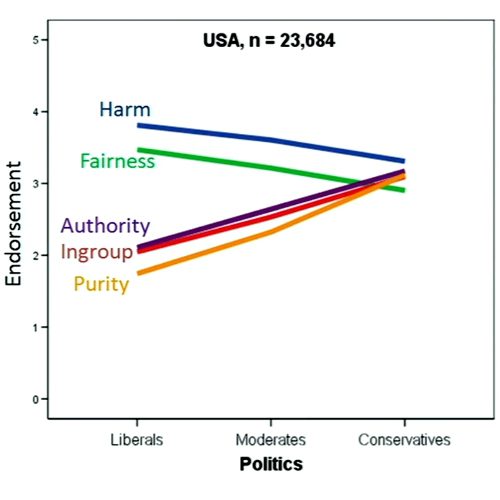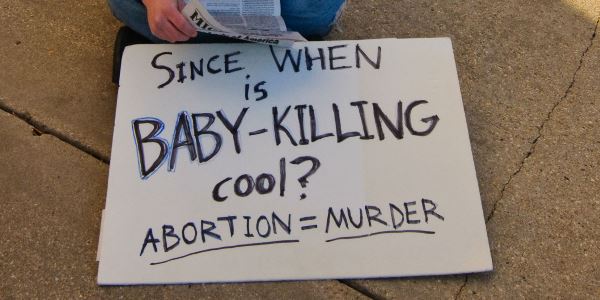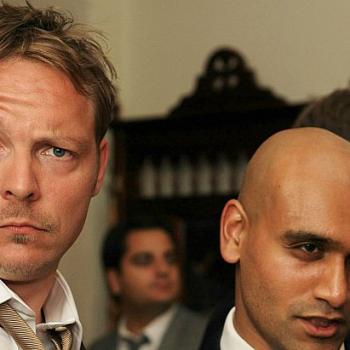I stumbled across an article on TheBlaze, Glenn Beck’s entertainment and news network, claiming “Abortionists and Planned Parenthood Shooter Are Just Two Sides Of The Same Coin.” Matt Walsh is the author, and his goal is to show that it wasn’t the outrageous rhetoric of pro-life fanatics that pushed a gunman to shoot up a Colorado Planned Parenthood facility, killing three and injuring nine.

I’m not Walsh’s audience. He’s preaching to his choir, using terms like “pro-aborts” and “abortion fanatics” to refer to people like me, but the article gives an insight into the hostility of and rationalization by this community.
Violent talk has consequences. Walsh wants to walk away from any consequences of violent rhetoric from extreme quarters of the pro-life movement.
[Clues that he’s unlike the typical pro-life terrorist] has not prevented abortion enthusiasts on the left from gleefully spiking the football as if some point has been proven by the random violent outburst of a paranoid hermit.
The point is that speech can have consequences. Spin a story about how Planned Parenthood is an evil organization, and this kind of violence may be a consequence. If you don’t think it through, impressionable readers might not either. As the Bible says, you’ve sown the wind and are now reaping the whirlwind.
As another example of speech having consequences, one mother tried to kill herself and her two daughters to avoid the Tribulation predicted by Harold Camping for May 21, 2011 (more here and here). Did Camping deserve no condemnation for saying that the world would end, knowing that some of his gullible flock might take him seriously?
Here’s an example of extreme anti-abortion speech from video evangelist Joshua Feuerstein:
I say, tonight, we punish Planned Parenthood. I think it’s time that abortion doctors should have to run and hide and be afraid for their life. (7/29/15)
That was in response to the anti-Planned Parenthood videos. After the Colorado shooting, pro-lifers tweeted about “babies” saved.
How pro-life is the pro-life movement?
Walsh says it goes without saying that he’s shocked by the shooter’s actions.
It goes without saying because, for one thing, we’re pro-life.
No, you’re pro-birth. How about being pro-health care? Or working to improve the society into which these babies are born? And isn’t it inconsistent when most of those who oppose abortions also accept the death penalty?
For another, there’s no logic in it.
Wrong. You went on and on about the deaths of “over 50 million babies.” That’s BS, of course—there’s a spectrum of personhood across the gestation period, and a single cell isn’t a baby, a human being, or a person—but it is quite logical to kill a few lives to save many. You can’t argue that abortion is murder but then claim that murder to reduce abortions is illogical.
The lives that were snuffed out in the front of the building weren’t any more or less human than the lives exterminated in the back. Our humanity does not exist on a spectrum.
Walsh imagines that Homo sapiens DNA is all that makes someone human, but with this he invents single-celled humans. Indeed, humanness does exist on a spectrum. A single cell isn’t very human, while the trillion-cell newborn nine months later is. (If you’d prefer, say that the single cell isn’t a person while the newborn is.)
Why shoehorn gestation into a binary situation? Drop the ridiculous idea that a single cell is a “baby” or “person.” Say that the single cell isn’t a person, the newborn is, and it’s a spectrum in between.
[A pro-choice advocate outraged at the vitriol is] like a Nazi standing up at Nuremberg and scolding society for hating him.
Nope. The Nazi was on trial for crimes against humanity. Planned Parenthood kills a fetus that isn’t yet a person. Walsh will predictably respond that it will be a person if given time, but this simply becomes the Argument from Potential—it isn’t inherently worth protecting now, but it will be. Which is no argument at all.
Apologies. Walsh rejects the shooter’s actions, but he chafes at this obligation.
We’re the ones who have to be seen condemning murder, as if there’s any reasonable question at all about where we stand on the subject?
You demand that moderate Muslims apologize for Muslim violence, don’t you? If so, you can appreciate how we’d like some assurance from the pro-life community that they reject the shooter’s actions that they might have triggered, but there’s still an asymmetry. The Friendly Atheist notes the difference between how Muslims after the Paris attacks are treated and how anti-Planned Parenthood activists are treated.
Unlike the seemingly endless stream of demands and condemnations that followed the November 13 terrorist attacks in Paris, no one has suggested that churches in which Planned Parenthood are routinely depicted as the devil’s spawn be closed; no one has demanded that Evangelicals who believe performers of abortions are committing crimes against humanity should be issued with special identity cards; and no one has called for arresting or deporting the inciters who exploit such incidents to whip up hate (and garner more votes).
Dismissing murder. Walsh says that the shooter’s actions were bad, but. He can’t leave it at that. He can’t ignore a grandstanding opportunity to argue the other side of the issue, that the shared enemy, abortion providers, are the worst people imaginable.
George Tiller, the heinous late-term baby executioner who ruthlessly slaughtered thousands of viable and fully developed infants, is the only abortion worker to be killed by an abortion opponent this century. That’s it. One. And he was one of the most dangerous, vicious, and murderous human beings to have ever lived.
You make it sound like working at a Planned Parenthood clinic is no more risky than being a librarian. Not so: “Between 1997 and 2012, there were seventy-three violent attacks at abortion clinics across the country” (source).
Go research why women went to Tiller to get abortions. Was it because they didn’t want to be so fat? Or was it a more substantial reason—birth defects, mother’s health, catastrophic changes in financial status, or something similar?
And let’s pause to listen to your rhetoric. Was Tiller seriously “one of the most dangerous, vicious, and murderous human beings to have ever lived”? Few of us would morally object to going back in time to assassinate Joseph Mengele or Heinrich Himmler or Adolph Hitler. You’ve intentionally put Tiller with this company, so why do you object to the shooter’s actions?
This hypocrisy is the problem that Walsh can’t acknowledge. He wants to say that the shooter was a killer and Planned Parenthood kills, so they’re in the same boat. He’s cut from different cloth because he’s pro-life.
But the rage he reveals in this article gives just as strong an argument for a very different arrangement: now it’s the killer with Walsh in the same boat because of his venomous rhetoric that could easily provoke violent action. Planned Parenthood is the odd man out because it provides legal abortions before the fetus is a person.
As the article progresses, Walsh is on a roll, and the indignant “Of course we deplore violence—we’re pro-life!” attitude is gone. With no ear for irony, he repeats the line the killer is said to have used:
Planned Parenthood sells the parts of dead babies.
Wrong again. The mother can choose to donate the fetus for research, and Planned Parenthood can be reimbursed for their costs.
Planned Parenthood is a rotten, corrupt, depraved, vile, disgusting, brutal, murderous conglomerate of butchers and mercenaries.
And yet you wonder how anyone could possibly be incited to violence?
Abortion fanatics hate pro-lifers personally. They hate Christianity. They hate children. They hate life itself. Theirs is the sort of hatred that destroys the soul and dissolves the human conscience. We hate what is evil; they hate what is good.
And now it’s just a rant.
Improving society.
Why don’t you [Planned Parenthood] just shut up and work on not killing babies?
Are you? What are you doing to minimize unwanted pregnancies?
Among countries in the West, the U.S. compares poorly. In the United States, the annual birth rate was 56 per 1000 women aged 15–19. Compare this to 8 in the Netherlands. The U.S. abortion rate for that group of women was 30 per 1000, while it was 4 in the Netherlands. What are we doing wrong (or what is the Netherlands doing right)? Clearly, there’s enormous room for improvement.
Is it better sex education? Is it easier access to contraception? Whatever it is, cutting the number of abortions in half in five years simply through more effective education and policy seems possible. Why are you approaching it the hard way? Instead of swimming upstream, you could work with pro-choice people who want the same thing. It almost sounds like you’re not really serious about this, and abortion isn’t the holocaust you claim it to be.
The trolley problem. Almost everyone has heard of this thought experiment, but let me give a brief summary. I think it’s relevant to this situation.
Imagine a trolley that’s heading toward five unsuspecting workers on the track. If it continues, it will kill them all. But there’s a switch, and you can reroute the trolley down another path with only one worker. Would you switch the trolley?
Most people say they would. But what if you’ve got the same trolley heading for the five workers, and you’re on a bridge over the tracks. The only way to stop the trolley is with a large weight in its path. You’re not big enough to stop it, but there’s a fat man on the bridge who is. Do you push him over?
Most people say they wouldn’t, but it’s the same calculation, five deaths vs. one.
The Colorado shooter has in effect pushed the fat man over. He’s taken the unthinkable but logical step—logical given Walsh’s own analysis. Walsh is left fuming about protocol—it’s one thing to label abortion providers as the most wicked scum on the earth, but in polite society one doesn’t actually act on it! He wants his rage but won’t accept the consequences.
But the consequence of using language like that, can be very dangerous.
I think candidates need to step back, take a deep breath, and understand …
we have a responsibility to use thoughtful and careful language.
— Wendy Davis, the former Texas state senator
who filibustered to block legislation that would restrict abortion
Image credit: Kit Clutch, flickr, CC

 As Haidt’s drawing shows, Americans across the political spectrum strongly endorse the foundations of Care/Harm and Fairness. Not so for the next three. The conservative says “go team,” while the liberal says “celebrate diversity” (#3). The conservative says, “respect authority,” while the liberal says, “question authority” (#4). The conservative says, “life is sacred” (while the liberal says, “women have the right to choose”) and “Men kissing? Eww!” (while the liberal says, “Don’t like gay marriage? Don’t have one.”), category #5.
As Haidt’s drawing shows, Americans across the political spectrum strongly endorse the foundations of Care/Harm and Fairness. Not so for the next three. The conservative says “go team,” while the liberal says “celebrate diversity” (#3). The conservative says, “respect authority,” while the liberal says, “question authority” (#4). The conservative says, “life is sacred” (while the liberal says, “women have the right to choose”) and “Men kissing? Eww!” (while the liberal says, “Don’t like gay marriage? Don’t have one.”), category #5.![]()



 We continue with my book review of Ray Comfort’s Fat Chance: Why Pigs Will Fly Before America Has an Atheist President. (Start with part 1
We continue with my book review of Ray Comfort’s Fat Chance: Why Pigs Will Fly Before America Has an Atheist President. (Start with part 1 
 This is a continuation of our analysis of the question, “Does Pro-life Logic Mean Women Who Get Abortions Should Be Punished?” addressed by Greg Koukl of the Stand to Reason podcast. (Start with part 1
This is a continuation of our analysis of the question, “Does Pro-life Logic Mean Women Who Get Abortions Should Be Punished?” addressed by Greg Koukl of the Stand to Reason podcast. (Start with part 1 
 This is a continuation of our analysis of the question, “
This is a continuation of our analysis of the question, “
 Greg Koukl and Alan Shlemon of the Stand to Reason podcast recently responded to an issue raised in the U.S. Republican campaign, “
Greg Koukl and Alan Shlemon of the Stand to Reason podcast recently responded to an issue raised in the U.S. Republican campaign, “
 Some years ago, I attended a lecture by conservative commentator Dinesh D’Souza. He began by asking why atheists care about religion. No one goes around complaining about those who believe in unicorns or mermaids, he said, so why should an atheist complain about theists? Theists and atheists should be allowed their separate viewpoints so that everyone’s happy.
Some years ago, I attended a lecture by conservative commentator Dinesh D’Souza. He began by asking why atheists care about religion. No one goes around complaining about those who believe in unicorns or mermaids, he said, so why should an atheist complain about theists? Theists and atheists should be allowed their separate viewpoints so that everyone’s happy.
 Health care in the Bible
Health care in the Bible


 If Christianity is the correct moral and spiritual path, why doesn’t it look like it?
If Christianity is the correct moral and spiritual path, why doesn’t it look like it?
 The film
The film 







